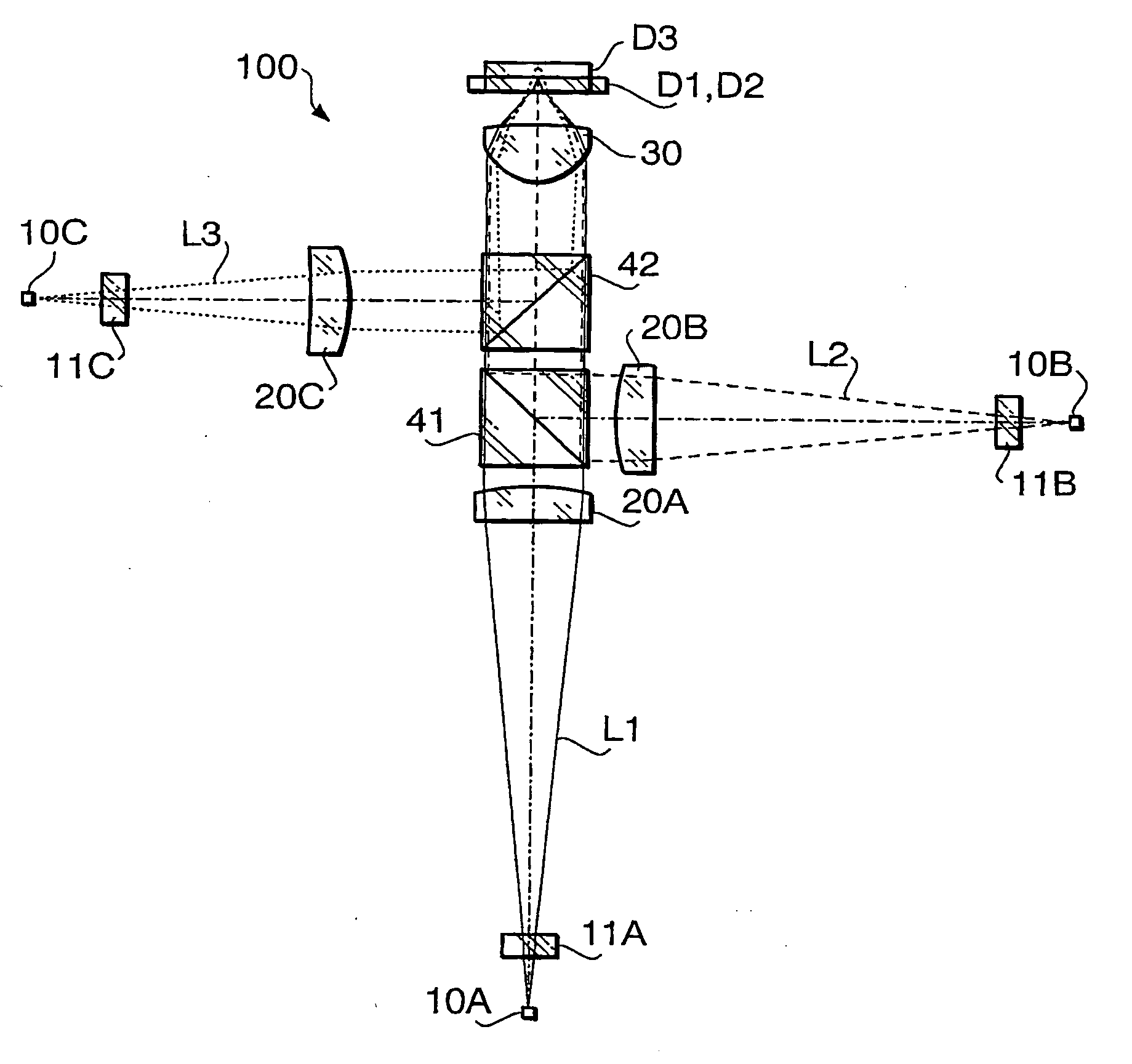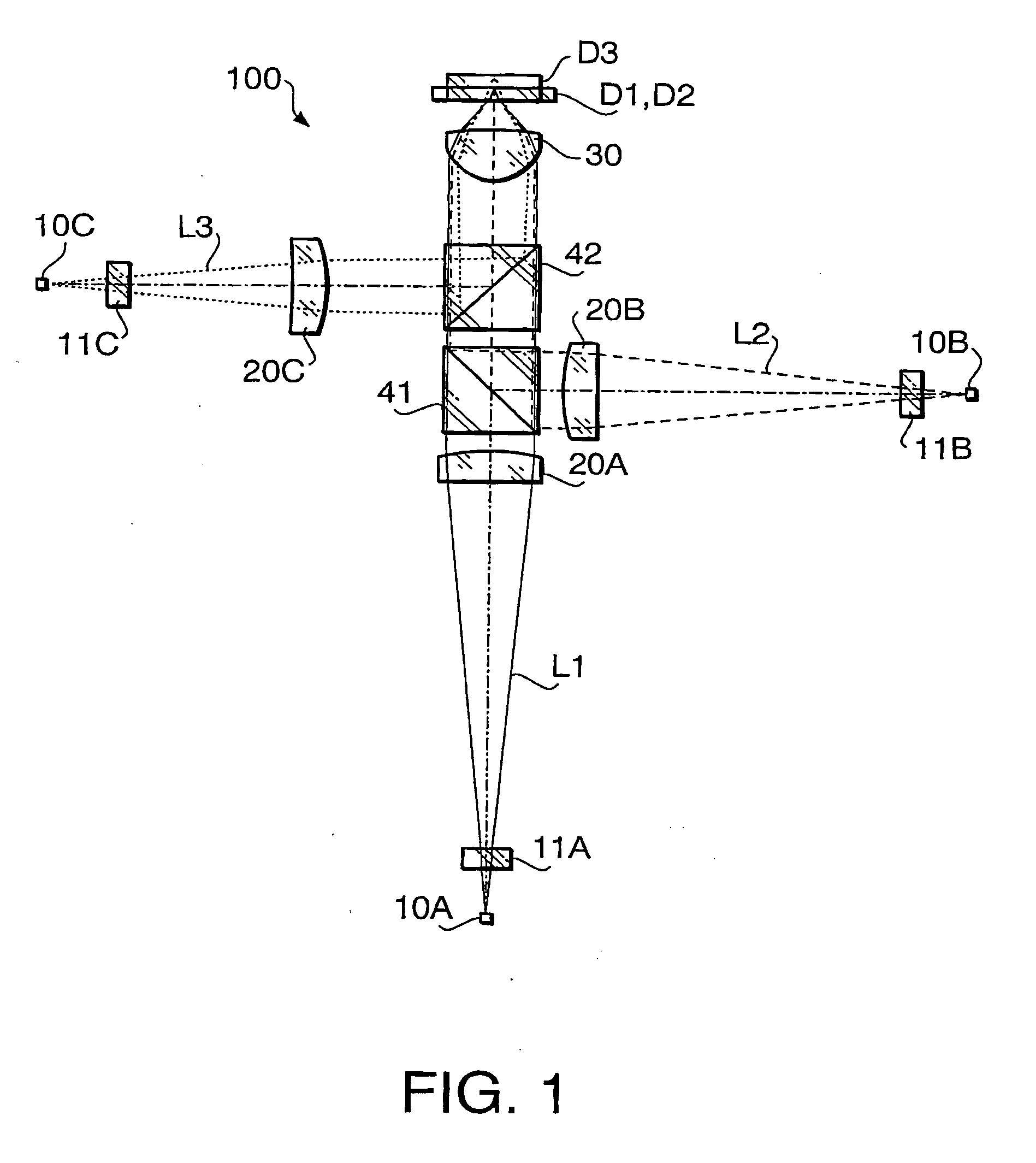Optical pick-up for optical disc device
- Summary
- Abstract
- Description
- Claims
- Application Information
AI Technical Summary
Benefits of technology
Problems solved by technology
Method used
Image
Examples
first example
[0092] An optical pick-up according to a first example will be described. Since an objective lens according to the first example is not provided with the diffracting structure, the reference number 30 is used for the explanation about the objective lens 30 according to the first example. Specifications of the objective lens according to the first example are shown in Table 1.
TABLE 1laser beam L1laser beam L2laser beam L3Design wavelength405657788(nm)f3.0003.1003.118Focal length (mm)NA0.6500.6020.472magnification0.012−0.010−0.067
[0093] In Table 1, the design wavelength is a wavelength suitable for the recordation / reproduction of each optical disc, f represents a focal length (unit: mm) of the objective lens 30, NA represents the numerical aperture on an image side. In Table 1, the specifications are indicated with regard to each of the laser beams L1 to L3.
[0094] The laser beam L1 is incident on the objective lens 30 as a converging beam when the optical disc D1 is used. Each of t...
second example
[0107] Hereafter, an optical pick-up according to a second example will be described. Since an objective lens according to the second example is provided with the diffracting structure, the configuration of the objective lens according to the second example is explained with reference to FIG. 3. The reference number 300 is used for the explanation about the objective lens according to the second example. Since specifications and the numerical configuration of the optical pick-up 100 and the objective lens 300 according to the second example are the same as those of the first example shown in Tables 1 to 7, explanations thereof will not be repeated.
[0108] In the second example, the size of the diameter of the laser beam L1 on the surface 300a of the objective lens 300 is larger than that of the laser beam L2. For this reason, the surface 300a is provided with the diffracting structure so that a desirable NA is attained for each of the optical discs D1 to D3 and, each of the laser be...
third example
[0115] Hereafter, an optical pick-up according to a third example will be described. Since an objective lens according to the third example is provided with the diffracting structure, the configuration of the objective lens according to the third example is explained with reference to FIG. 3. The reference number 300 is used for the explanation about the objective lens according to the third example. Since specifications and the numerical configuration of the optical pick-up 100 and the objective lens 300 according to the third example are the same as those of the first example shown in Tables 1 to 7, explanations thereof will not be repeated.
[0116] Similarly to the second example, the surface 300a of the objective lens 300 is provided with first and third regions 31 to 33 so that the desirable NA is attained for each of the optical discs D1 to D3, and each of the laser beams L1 to L3 is suitably converged on the recording surface of the corresponding optical disc. However, the dif...
PUM
 Login to View More
Login to View More Abstract
Description
Claims
Application Information
 Login to View More
Login to View More - R&D
- Intellectual Property
- Life Sciences
- Materials
- Tech Scout
- Unparalleled Data Quality
- Higher Quality Content
- 60% Fewer Hallucinations
Browse by: Latest US Patents, China's latest patents, Technical Efficacy Thesaurus, Application Domain, Technology Topic, Popular Technical Reports.
© 2025 PatSnap. All rights reserved.Legal|Privacy policy|Modern Slavery Act Transparency Statement|Sitemap|About US| Contact US: help@patsnap.com



